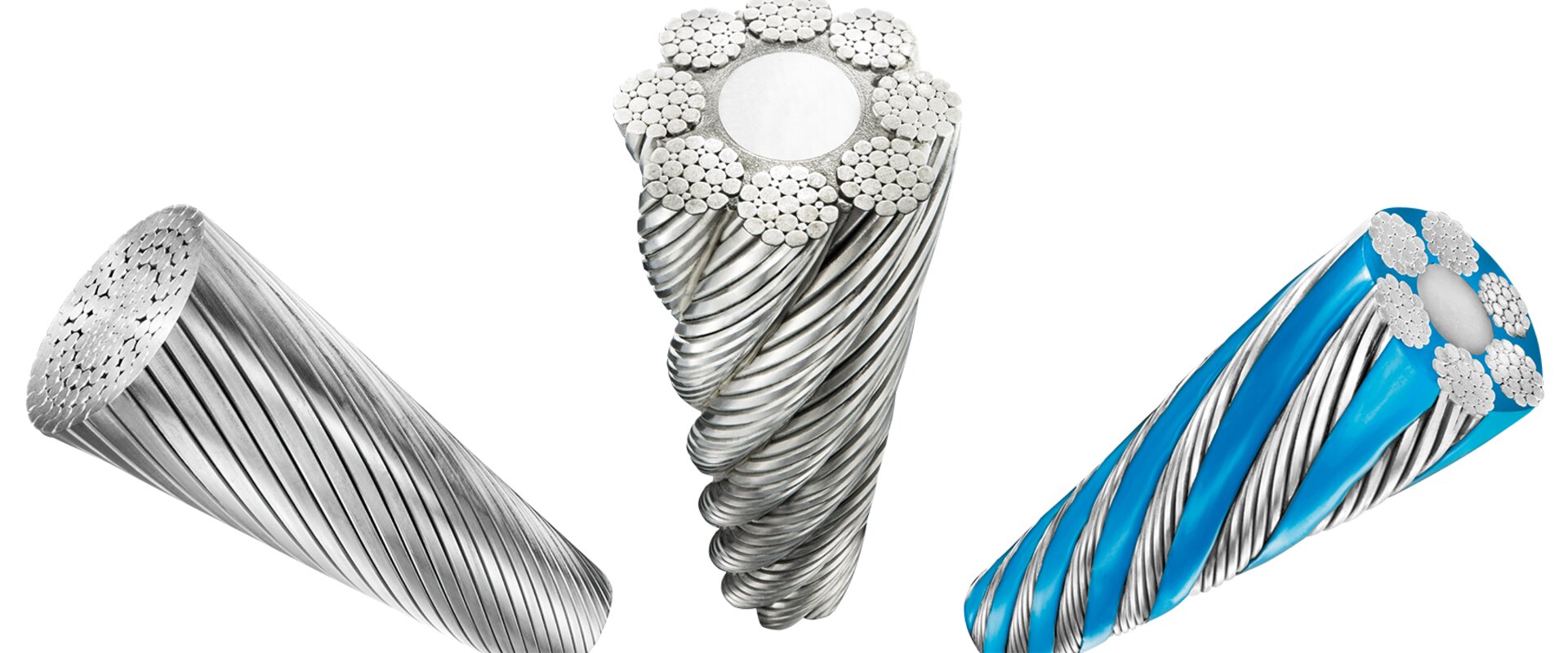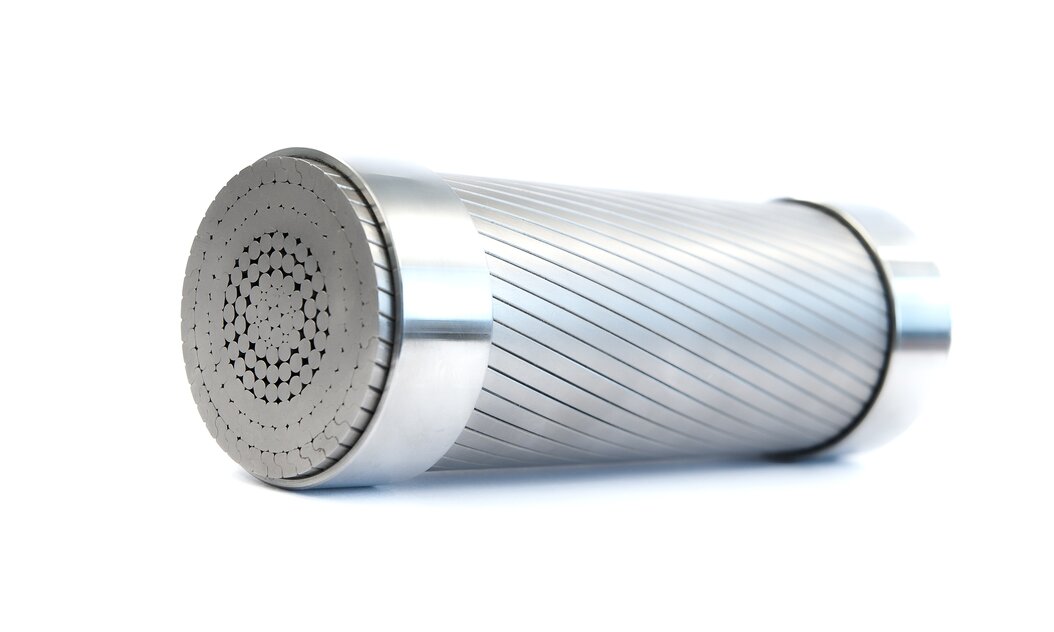28 JUNE 2017
Wire rope comes in all shapes and sizes, and every cable car system needs its own special version depending on its type, size, length and geographical environment. This article sets out to tell you everything you ever wanted to know about the cables (or ropes) and how they are made, why the new 3S cableway is called “3S” and what kind of ropes are being produced by FATZER in Romanshorn for the new cableway.
Unlike the existing Trockener Steg to Klein Matterhorn cable car, whose cabins travel up and down between the stations without changing sides, the new 3S cableway will be a continuous circular system in which the gondolas move in a loop up one side and down the other. In this kind of circulating cableway the ends of the hauling cable are joined with a long splice to form the continuous loop, and the cars can either be attached to it in a fixed position or in a way that enables them to be coupled and decoupled. In addition to its hauling cable, the 3S cableway (3S stands for 3-Seil, which means 3-rope) has two support cables, allowing much bigger gondolas to be used. The support cables are anchored in the mountain station and tensioned at the valley station by means of weights or electric or hydraulic tensioners. These provide the required tension via a deflecting pulley which can be adjusted in the direction of travel. It is essential to maintain the rope tension at a constant level for a number of reasons. First, it is important to prevent the ropes from sagging and so the system must be able to compensate for increases in temperature. Second, there must be no bending or lateral forces caused by the cars so it is necessary to maintain the friction required on the driving and braking rope sheaves.
Cableway engineers use wire ropes for the hauling and support cables. The term wire rope as used here refers to a cable-laid wire rope; wires are laid, or twisted, into strands which are then themselves braided to form the rope. The strands are twisted on special twisting machines. A specific number of wires are fed through the twisting head (a disc with the appropriate number of holes) and converge in a die before being twisted in a spiral pattern around a core strand. The completed strand that emerges from the die is then coiled on a spool. In the next stage of the process, several of these strands are laid around a core by another twisting head to produce the finished rope. The core can be made of synthetic fibres or it might be a polyethylene core rod which is heated during the process of laying the strands. The heat softens the synthetic material and the individual strands are compressed into it to give a stabilizing and supporting effect.
Different ropes for different jobs
As hauling and support cables fulfil different purposes with different requirements they have to be manufactured in different ways.
Locked and half-locked ropes are especially useful as hauling cables for passenger cableways as they have a smooth surface which prevents juddering. Locked ropes have an outer layer of wires with a shaped profile. This enables them to interlock like a zip fastener, giving the rope a smooth surface which also helps prevent the penetration of moisture and dirt. It also means the outer wires cannot escape from the rope bundle in the event of breakage. Fully locked ropes give even greater protection, with up to five layers of profiled wires. However, their structure makes them very stiff – this type of rope cannot be spliced to form a continuous loop and is therefore unsuitable for use as a hauling cable. In addition, support cables are twisted, which means that the profiled wires are prepared with a kind of “hair curler” along their lay length and the resultant reduction in energy potential of the preformed wires means these ropes have extremely low tension. This has distinct advantages, for example during cable winching – which in the case of the new 3S cableway will be extremely complex.
There are fully locked hauling cables which have a diameter of up to 130 mm, a minimum breaking strength of 1460 t and which weigh almost 100 kg a metre. Fully locked hauling cables can also be fitted with integrated power and fibre-optic cables, as is the case with two of the four hauling cables for the new 3S cableway to the Klein Matterhorn. In each of these, 24 single-mode glass fibres were incorporated in the rope core, allowing a permanent reliable data connection to be maintained between the stations.
By contrast, hauling cables consist of twisted strands and can be spliced to form a continuous loop. The hauling cable for the new 3S cableway is a 6x36 Warrington Seale: the rope has six strands each made up of 36 wires. Warrington-Seale denotes a style of rope made up of a core, two lays of thin wires and one of thicker wires. The total length of the rope will be 8120 metres and it will weigh almost 8.3 kg per metre.
Fatzer wire ropes: each one unique
Founded as a rope-making company in 1836 in the Swiss town of Romanshorn, Fatzer has been making ropes of the highest order of quality for generations. Initially the company manufactured hemp ropes for the agriculture, fishing and shipping industries. Production of steel rope got under way in around 1900. Today FATZER specializes in the development, manufacture and global sales of technically advanced wire ropes for cableways, winches, cable structures and other applications and, with its long-standing commitment and consistent focus on the market, the company has established a leading position among wire rope manufacturers.
Efficient production of specialist ropes requires sophisticated technical equipment. FATZER has a highly productive facility for the manufacture of stranded ropes and spiral strand ropes. Production equipment is adapted on an ongoing basis to enable the company to meet specific customer requests and industry standards at any given time. During the production process parameters such as diameter and lay length are continuously monitored using state-of-the-art methods. Modern equipment is used for quality control of raw materials involving bending, torsion and tensile tests.
Test cableway
The cableway market demands ever more powerful systems which at the same time can run more smoothly and quietly than before. This requires systematic product development and innovation, including testing in practical trials before field tests can be carried out. It is therefore essential for the company to have its own testing centre where trials can be conducted to analyse under realistic conditions the effects of speed, braking force, rope pull, and sheave and rope diameter on the fatigue life and wear of the ropes. The fatigue strength of spliced stranded ropes and of the splice itself is determined under conditions of forced bending and pulsating tension in extended duration tests.







